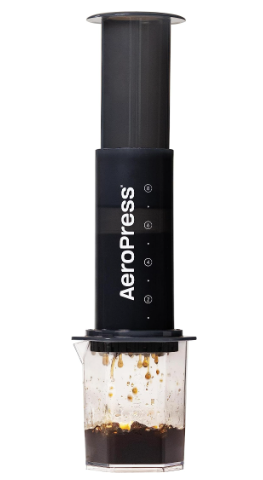Remote Work and Coffee: Why Your Home Brew Matters More Than Ever
BLOG NEWS
10/7/20255 min read


The Rise of Remote Work and Its Impact on Daily Routines
The landscape of work has undergone a significant transformation in recent years, particularly due to the advent of advanced technology and a shifting corporate mindset, which have facilitated the rise of remote work. This trend has been notably accelerated by global events, such as the COVID-19 pandemic, which necessitated a rapid pivot to virtual work environments. Consequently, many individuals found themselves transitioning from traditional office settings to remote positions, inevitably altering their daily routines.
Working from home has reshaped how employees view their breaks, productivity, and personal time. In the corporate world, regular breaks were often scheduled and structured, providing employees with designated times to recharge. However, within the home setting, the boundaries between work and personal life can blur. This new dynamic has challenged many to establish effective coping mechanisms to ensure productivity while also prioritizing their well-being. As a result, the concept of rituals and routines has gained prominence among remote workers.
Among these rituals, the act of brewing coffee has emerged as a pivotal element in many individuals' daily routines. The comforting routine of making coffee not only punctuates the workday but also offers a moment of respite amid one’s work tasks. This practice serves a dual purpose: fostering productivity and enabling a mental break from work-related stress. The aroma of freshly brewed coffee can signal a transition from one task to another, reinforcing a structured yet flexible work environment at home.
Despite the advantages of working remotely, individuals must recognize and address the challenges that accompany this work style. By finding ways to optimize their daily routines, such as integrating the ritual of coffee brewing, remote workers can effectively manage their time and maintain productivity while enjoying the comforts of their home environment.
The Connection Between Coffee and Productivity
Coffee has long been celebrated for its invigorating properties, primarily due to its caffeine content, which acts as a central nervous system stimulant. This stimulant effect can enhance focus and cognitive function, making it easier to tackle complex tasks, improve concentration, and promote overall productivity levels. Studies indicate that moderate caffeine consumption can lead to increased alertness and quicker reaction times, which can be particularly beneficial in a remote work setting where distractions are plentiful. By recharging the mind, a good cup of coffee can empower employees to deliver high-quality work efficiently.
Furthermore, the act of taking coffee breaks is not merely about the beverage itself; it also plays a crucial role in workplace morale and creativity. Stepping away from the workstation for a few moments to enjoy a coffee can provide a mental reset, allowing individuals to return with fresh perspectives and renewed energy. This ritual can be especially important in a remote environment where the boundaries between work and personal time often blur. Creating intentional breaks can mitigate feelings of burnout and fatigue, sustaining worker motivation and engagement throughout the day.
Moreover, brewing coffee at home can significantly enhance this dynamic. The process of preparing coffee can serve as a mindful ritual, providing a break from the digital world and emphasizing a transition from work to leisure. This simple act can help individuals delineate their work hours from personal time, fostering a healthier work-life balance. In essence, embracing the home brewing experience not only enriches the coffee-drinking ritual but also serves as an effective strategy for maintaining productivity while working remotely.
Crafting Your Perfect Home Brew: Techniques and Tips
Making the perfect cup of coffee at home is an art that can significantly enhance your remote work experience. With various brewing methods available, it's essential to understand the pros and cons of each to discover your ideal approach. The pour-over method, for instance, allows for a high degree of control over the brewing process, resulting in a clean and flavorful cup. Using a gooseneck kettle can help you achieve the desired water flow, while selecting the right grind size—medium to medium-fine—ensures optimal extraction.
On the other hand, the French press offers a bold and hearty brew, utilizing coarse grind coffee and steeping it for several minutes. This method captures the essential oils from the coffee, delivering a rich, full-bodied flavor. However, the downside is that it can leave sediment in your cup, which may not appeal to everyone.
Espresso is renowned for its concentrated flavors and creamy consistency. This technique requires an espresso machine or a stovetop moka pot, with a fine grind for optimal results. While the initial investment can be higher, mastering this method can lead to a rewarding home coffee experience. For those who prefer a colder option, cold brew is an excellent choice for a smoother, less acidic taste. This technique involves steeping coarsely ground coffee in room temperature water for an extended period, generally 12-24 hours, resulting in a refreshing beverage that's perfect for warmer days.
Regardless of your chosen method, the quality of ingredients is paramount. Selecting high-quality coffee beans, preferably single-origin, and paying attention to the grind size can dramatically affect the final taste. Additionally, using filtered water can ensure that your coffee's flavor is not compromised by impurities. As you experiment with these techniques, you will likely develop a personal coffee brewing routine that not only caters to your taste but also enhances your productivity while working remotely.
Creating a Coffee Culture in Remote Workspaces
As remote work continues to redefine traditional office environments, cultivating a coffee culture within virtual settings has gained importance. Coffee, a universal symbol of connection and conversation, can serve as a bridge for colleagues separated by distance. One effective approach to foster this sense of community is through virtual coffee breaks. These informal meetings provide employees a chance to step away from their workstations and engage in light-hearted conversation, much like they would in a physical office. By scheduling regular coffee breaks, teams can create a ritual that promotes not only relaxation but also strengthens interpersonal relationships.
Additionally, online coffee challenges can play a significant role in enhancing team dynamics. Colleagues can participate in activities such as sharing their favorite coffee brewing methods, trying out new blends, or even engaging in friendly competitions to create the best home brew. Such challenges can stir up enthusiasm and encourage sharing of experiences, whether through photos or social media platforms. By celebrating these small moments, remote workers can feel more connected to one another, reducing feelings of isolation that often accompany telecommuting.
Establishing communal spaces within virtual platforms can further contribute to building a robust coffee culture. Creating dedicated channels for coffee-related discussions allows team members to share their coffee experiences, recipes, or any coffee-related trivia. These spaces become vital hubs for informal interactions that can lead to unexpected collaborations and a stronger team bond. Recognizing the importance of social engagement, remote work environments can benefit greatly from a coffee culture that not only enhances productivity but also promotes team cohesion.
In conclusion, integrating coffee culture into remote workspaces can significantly contribute to a more cohesive and engaged workforce. By adopting practices like virtual coffee breaks, online challenges, and communal spaces, organizations can foster meaningful connections among team members, ensuring that remote work does not translate to social disconnection.
One of our most eco-friendly coffee makers..
AeroPressXL Coffee press


Click 'Shop Now!' to find on Amazon now....
Specs
The AeroPress XL is an upsized version of the original AeroPress coffee maker, designed to brew larger volumes while maintaining the core benefits of its unique immersion and pressure-based method. It holds about 20 fluid ounces (around 590 ml), allowing users to make up to two full cups of coffee or several espresso-style shots in one press. The device is made from BPA-free plastic, and it comes with a shatterproof Tritan carafe designed to handle the increased brew size. Its dimensions are roughly 4 inches in diameter by 10 inches tall, making it significantly larger than the standard model. The brewing method combines immersion, aeration, and micro-filtration, delivering a smooth, low-acidity cup of coffee. The kit includes 100 XL-specific micro filters, a scoop, stirrer, and the custom carafe.
Pros and Cons
Pros
One of the biggest advantages of the AeroPress XL is its increased capacity. If you’re someone who often makes coffee for two or more people, or simply wants more in one go, this model saves time and effort compared to repeating brews with the original. It still delivers a clean, rich cup thanks to its fine paper filters and pressure-based brewing. The unit is lightweight yet durable, making it suitable for home or travel, and cleaning is straightforward—grounds eject cleanly and parts rinse off easily. You also retain control over brew time, temperature, and grind size, which makes it great for dialing in your personal taste preferences.
Cons
However, its larger size does come with drawbacks. The brewer is taller and bulkier, which may not suit small kitchens or tight travel setups. It also uses different filters than the original AeroPress, meaning you can’t interchange accessories or use third-party options built for the standard model. Handling the increased hot water volume requires more care, especially when pressing, as the unit can become top-heavy and harder to stabilize. The included carafe, while functional, lacks a handle, making pouring less ergonomic, particularly when it's full. Also, the overall design may feel less portable than what AeroPress fans are used to.
Our Review
The AeroPress XL successfully brings the beloved brewing qualities of the original to a larger format, and it does so without compromising on taste. We found the coffee produced to be consistently smooth, aromatic, and free of the bitterness or grit you might get with French press or other manual methods. The extra capacity makes it ideal for households, office use, or anyone who wants more than just a single cup. It still brews fast, with most cups done in under two minutes, and the cleanup remains one of the easiest among manual brewers.
That said, the bigger size changes the user experience slightly. It takes more counter space, the plunger needs firmer pressure to push through more liquid, and you have to be a bit more cautious with setup—especially if you use the inverted method. The separate filter size also means you'll need to plan for ongoing supply. And while the carafe is a nice inclusion, its lack of handle makes pouring awkward, especially with hot liquids.
In short, the AeroPress XL is a great step up for regular AeroPress users who want more coffee per press without sacrificing the quality and convenience they've come to expect. But for solo coffee drinkers or frequent travelers, the original model or AeroPress Go may still be the better fit.
